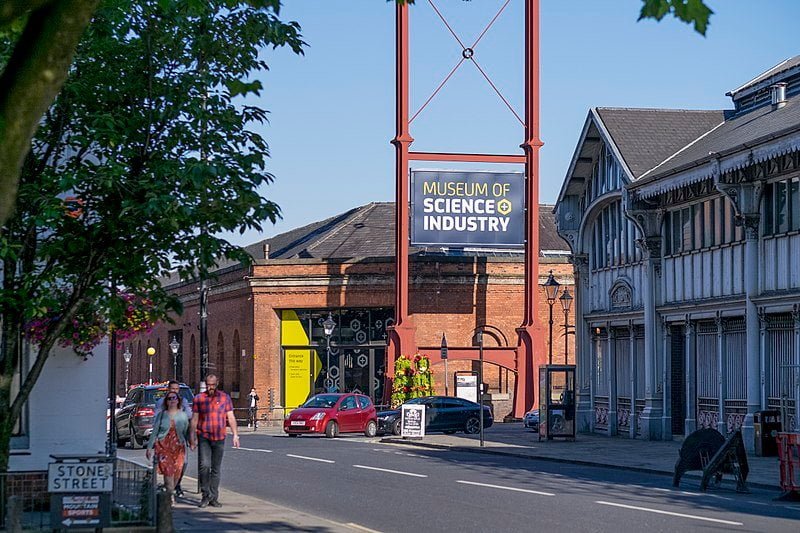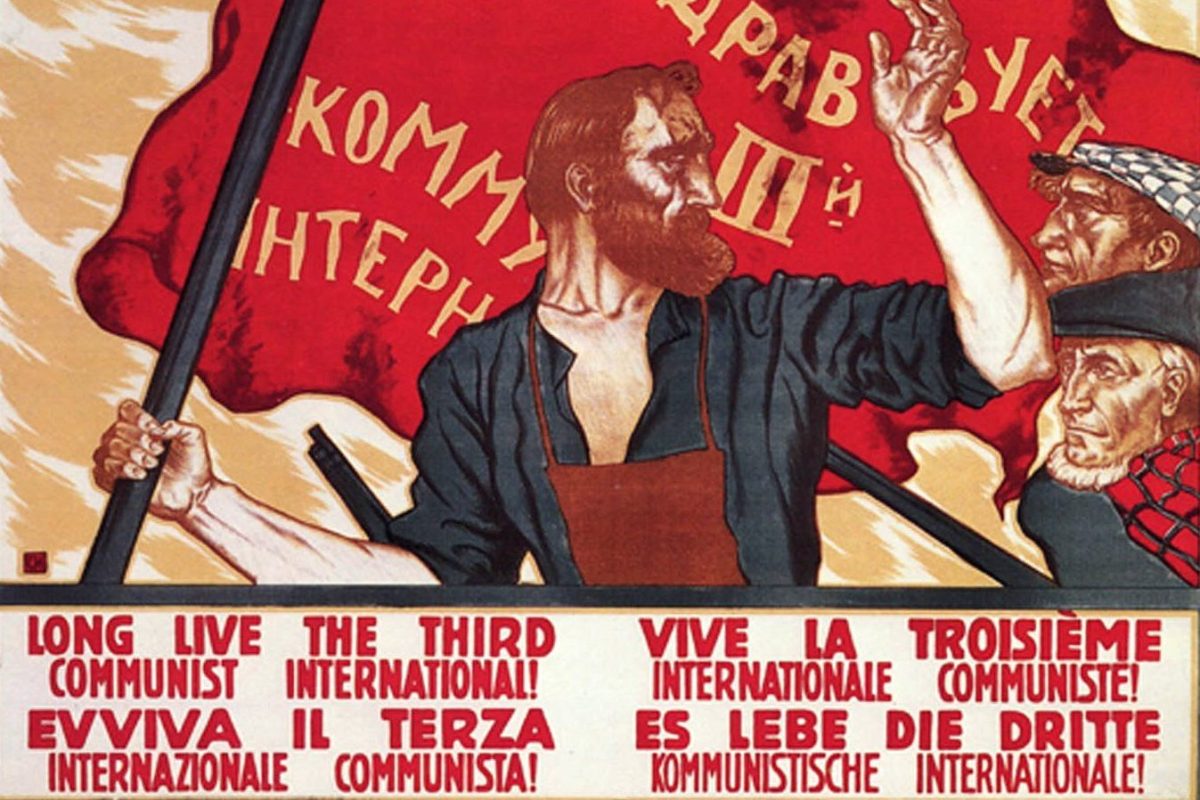At this year’s World School of the International Marxist Tendency
held at the end of July, Alan Woods delivered a speech on the nature of
the present crisis of capitalism, in which he deals with the
relationship between the economic cycle and the class struggle, and
also looks into what kind of recovery we can expect, considering the
enormous contradictions that have accumulated within the system.
The economic cycle and the class struggle
The world is experiencing the deepest crisis since the 1930s.
Trotsky pointed out that one of the most difficult and complicated
tasks that faces Marxist analysis is to answer the question, “Through
what phase are we passing?”
Effects
of the last Great Depression: ‘Breadline’ sculpture at the Franklin D.
Roosevelt Memorial in Washington, DC. Photo by Tony the Misfit on
flickr. There is no such thing as a final crisis of
capitalism. The boom slump cycle has been a constant feature of
capitalism for almost two hundred years. The capitalist system will
always eventually get out of even the deepest economic crisis until the
system is overthrown by the working class.
This is evident. But the concrete question is: how do they get out
of the crisis and at what cost? And the second question is: what is the
relationship between the economic cycle and the consciousness of the
working class? Trotsky explained many times that the relationship
between the economic cycle and consciousness is not an automatic
relationship. It is conditioned by many factors, which must be analysed
concretely.
There are two marvellous articles by Trotsky that deal with this question: “ Flood-Tide ,”
which you will find in “The First Five Years of the Communist
International”. The other article of fundamental importance was written
in 1932, that is to say, during the deep crisis that followed the 1929
crash. It is called “The Third Period of the Comintern’s Errors”
(January 8, 1930). These two articles deserve to be discussed
thoroughly at every level.
It is an elementary proposition of dialectical materialism that
human consciousness is innately conservative. Most people don’t like
change. They resist new ideas. And they will cling to the existing
forms and ideas of society until they are compelled to abandon these
ideas on the basis of the massive hammer-blows of events.
The present situation of world capitalism reminds one of what
Trotsky said in 1938. “Objectively speaking, the conditions for world
Socialist revolution are not only ripe and mature, but they’re rotten
ripe!” The situation has revealed its bankruptcy from a historical
point of view. That is clear to everybody. And yet we are left with a
contradiction, a paradox. If this is true, why is it that the forces of
Marxism still remain a tiny minority?
The answer to that question is very simple. Consciousness is lagging
far behind the objective situation. The mass organizations of the
working class are lagging far behind the real situation. Above all, the
leadership of the proletariat is lagging far behind the objective
situation.
These factors did not drop from the clouds, but they have been
conditioned by decades and generations of capitalist economic upswing,
of full employment, relative improvements of living standards. This has
been the position, particularly in the advanced capitalist nations, not
for a short time, but for a period of over fifty years. That is what
conditions the consciousness of the working class in Britain, in
France, in Spain, in the USA. Of course the conditions in the so-called
“third world” are different.
Consciousness of the working class
It is a very serious mistake for revolutionaries to confuse what we
understand with how the masses see things. Most workers, you must
understand, the masses, don’t have the same consciousness as the
Marxists. The first effect of a deep crisis, a deep slump ‑ and this is
a deep crisis ‑ as far as the masses are concerned, is shock. The
workers are stunned, traumatized, and they don’t understand what is
happening.
Most of them believe that the crisis will be temporary. They draw
the conclusion that if they pull in their belts, make sacrifices, put
their heads down, eventually things will get better and they will go
back to the previous conditions. From the standpoint of most ordinary
people, this is a fairly logical assumption. This crisis appears to be
something abnormal, something out of the ordinary. And people want to
get back to the “good old days”.
The “leaders” of the working class, the trade union leaders, the
Social Democratic leaders, the former Communists, the Bolivarian
leaders, all encourage the idea that this crisis is something
temporary. They imagine it can be solved by making some adjustments to
the existing system. And when we talk of the subjective factor, the
leadership, we must also understand that for us the leadership of these
organizations is not a subjective factor. It is an important part of
the objective situation, which for a time can hold the process back.
So far the “green shoots” are extremely weak and almost invisible. Photo by KOREphotos on flickr.
Of
course, this idea of the reformists, that all that is needed is more
control and regulation, and that we can return to the previous
conditions, is false. This crisis is not a normal crisis, it is not
temporary. It marks a fundamental break in the process. That does not
mean that there cannot be a recovery of the business cycle. That is
inevitable at a certain point.
At this moment in time, the bourgeois economists and politicians,
and above all, all the reformists, are desperately seeking some sort of
revival to get out of this crisis. They look to the recovery of the
business cycle for salvation. They are constantly talking about the
“green shoots” of recovery. But so far the “green shoots” are extremely
weak and almost invisible.
The measures which have been taken by all the Capitalist governments
in the world, from a standpoint of orthodox capitalist economics, are
completely irresponsible. The only explanation for these measures is
panic. The ruling class is terrified of the social and political
repercussions of the economic crisis. That is why they are pumping vast
sums of money into the economy and they are creating huge unprecedented
levels of debt. As everyone knows, sooner or later debts must be
repaid. That in itself is a recipe for a gigantic crisis in the future.
What kind of “recovery”?
It is absolutely clear that some kind of recovery in the business
cycle is inevitable at a certain point. But it is equally clear that it
will not solve any of the problems facing capitalism. On the contrary,
it will prepare a newer and deeper economic crisis, and above all a
deep social and political crisis. The bourgeoisie is desperately trying
to recover the economic equilibrium, which has been shattered by the
collapse of the last year to eighteen months. The problem that they
face is that all the measures that they have taken to restore the
economic equilibrium will completely destroy the social and political
equilibrium.
There is an interesting article by Trotsky, written in 1932 — at the very lowest point of the economic crisis ‑ called “ Perspectives for the Upturn ” , where he refers to the effects of the economic crisis on the consciousness of the masses. He says the following:
“Discontent, the wish to escape poverty, hate for the exploiters and
their system, all these emotions which are now suppressed and driven
inward by frightful unemployment and governmental repression, will
force their way out with redoubled energy at the first real signs of an
industrial revival.”
It is a very concrete question. Workers see the factories are being
closed, their jobs are at risk, their families are at risk, the trade
union leaders don’t offer any alternative. So temporarily this has a
restraining effect on strikes. But when there is even a small upturn,
and they see that the bosses are no longer sacking people but taking a
few people on and the order books are beginning to fill up, this can
act as a powerful stimulus to the economic struggle.
For example, there is world overproduction in steel. There’s “too
much steel” (for the limits of the capitalist system, that is). This is
related to a sharp fall in the production of cars. There is something
like a thirty percent excess capacity in the automobile sector
worldwide. And excess capacity is only another way of saying
overproduction. The car manufacturers are selling off their surplus
stocks, closing factories and sacking workers. But once they finish
running down the stocks, there will be a certain small improvement,
which will serve to embolden the car workers to take action.
Let us take a historical example. In the United States, from 1929 to
1933, there were no strikes. No movement, except riots of the
unemployed. But when there was a slight upturn, in 1933-1934, there was
the beginning of a huge wave of strikes and factory occupations,
including the Minneapolis strike which was led by the Trotskyists.
That had an immediate effect on the mass organisations in the United
States. It led to the creation of the CIO, the Congress of Industrial
Organizations, which was a breakaway from the old craft unions, the
American Federation of Labor. The CIO was a very radical union that
organized previously unorganized sections of the workers. And we will
see the same process again.
In the same article Trotsky writes that a revolutionary must be
patient. Impatience is the mother of opportunism as well as
ultraleftism. He also writes that every Party member must be obliged to
join the trade unions. He stresses the need for the revolutionaries to
establish closer links to the mass organisations, above all the unions.
That is no accident. In a crisis, the workers feel the need for the
mass organisations to defend their interests, and these organisations
will be affected by the crisis.
Blindness of the bourgeois
Trotsky said in the Transitional Programme
that the bourgeoisie is tobogganing to disaster with its eyes closed.
These words could have been written yesterday. The bourgeois
understands nothing; they don’t know what’s happening. They are in a
state of panic. That is why they are taking these irresponsible
measures. It is a sign of desperation.
This again is no accident. Lenin pointed out that a man on the edge
of a cliff does not reason, he doesn’t think rationally. And the most
ignorant and stupid section of the capitalists are the bourgeois
economists. For the last twenty years they bragged and boasted that
there would be no more boom and slump, that the cycle had been
abolished. It is an actual fact, that in the whole of the previous
period, for decades, the bourgeois economists never predicted a single
boom and never predicated a single slump.
I might add that the same thing is true of Marxist economists. Over
the years I have heard many wonderful theories put forth by many clever
economists who claim to be able to work out how to predict the cycle.
I’ll tell you something: I wish they were right and that they would
tell me the formula, in private. We could make a lot of money. But
sadly, I have to say that for as long as I can remember, our own
guesses at the specific movements of the economic cycle more often than
not were wrong.
Paul KrugmanThat
is not an accident. Economics is not an exact science. It never has
been, and never will be. All you can do is to explain the broad
underlying processes and make an educated guess concerning the timing
of events. Nevertheless, we are entitled to have a little laugh at the
bourgeois economists. They worked out a wonderful new theory called the
“efficient market hypothesis.” Actually, it’s a very old theory,
there’s nothing new about it. It amounts to the old idea that: “Left to
itself the market will solve everything. It will balance itself out. As
long as the government doesn’t interfere, doesn’t distort this
beautiful market mechanism, sooner or later everything will be ok.” To
which, John Maynard Keynes issued the very celebrated reply, “Sooner or
later we’re all dead.”
I can’t resist giving two quotes from prominent bourgeois
economists, which are a confession of bankruptcy. Barry Eichengreen, a
prominent economic historian, now writes: “The crisis has cast into
doubt much of what we thought about economics.” And here is Paul
Krugman, who was given the Nobel Prize for economics in 2008, only last
year: “For the last thirty years macroeconomic theory has been spectacularly useless at best, and positively harmful at worst.” So that’s it: they confess that they haven’t got the faintest idea about economics, or anything else.
The whole system is breaking down. And now they try and comfort
themselves with talking about the “green shoots” of recovery. Yet if
you look at the figures you see that the US economy is continuing to
decline, especially in the industrial sector. Although the fall seems
to be less steep than it was.
Debt
I have got here the figures of the IMF. They have projected a
recovery for 2010. This is a guess, it will probably be wrong, but I
will mention these calculations anyway. Here is their wonderful
perspective for next year: United States 0.8 percent growth; Japan 1.7
percent (which if you know anything about the history of Japan, is very
poor); China (which has pumped huge resources into stimulating demand)
8.5 percent, and the European Union, a continued fall of 0.1 percent.
So what we are facing here in the best case scenario is an extremely
feeble recovery, which will be accompanied, not by an improvement in
living standards, but by ferocious attacks on living standards, cuts in
public spending, and increased taxation which will fall on the working
class and the middle class. Is this a scenario for social peace and
stability? A recovery with those characteristics will serve to
infuriate the working class and that will be accompanied by a wave of
strikes and general strikes, you can be sure of it.
Let us deal now with the question of debt. The fact of the matter is
that the bourgeoisie, particularly in the United States, is so
terrified of the effects of a deep slump that it has been pumping in
money and resources in a desperate attempt to avoid the slump getting
any bigger. According to the IMF, the gross public debt of the ten
richest nations by 2010 will be 106% of the gross domestic product. In
2007 in was 78%. That means an increase of extra debt, in three years,
of more than nine trillion dollars. This is an incredible state of affairs. It is without precedent in the whole of history. And it cannot be sustained.
In the 1930s, Hitler resorted to similar policies through a massive
programme of arms expenditure. In the USA, Roosevelt resorted to the
New Deal, which, by the way, did not solve the crisis in America. What
solved the problem of unemployment in America was not the New Deal but
the Second World War. And the same is true for Germany. Hitler had to
go to war in 1938, because if he hadn’t done so, the German economy
would have collapsed. That was the fundamental reason for the Second
World War: the imperative necessity of German capitalism to solve its
problems at the expense of Europe.
Hitler solved the problem by the simple expedient of invading Europe
and seizing all the wealth of France and its other imperialist rivals.
However, the perspective of war now is ruled out. Nowadays, the
European capitalists are in competition with the United States. Who is
going to fight against the United States? The very idea is a joke.
There cannot be a world war under these circumstances. Of course, there
will be small wars all the time. Iraq was a small war. Afghanistan is a
small war. There is a small war in Somalia. But a major war between the
major powers is ruled out.
I said that these figures of debt were unprecedented, but what I should have said is unprecedented in peace time.
War is a different matter. After the Second World War, the public debt
of Britain was 250% of gross domestic product. And America had a debt
of over 100% of GDP. That was a result of the Second World War. But
they solved these debts by an enormous economic upswing after 1945. I
won’t go into the reasons for it because we’ve stated the reasons for
this in previous documents (See Ted Grant: Will there be a Slump? ).
The post-war upswing lasted for about thirty years (until 1974). But
that is no longer on the agenda. No one is suggesting such a
perspective. The bourgeois economists are all agreed that it will be a
long and painful process to struggle out of the mess which they’re in
now. And because they can’t go to war, all of the contradictions must
be reflected internally in a ferocious class struggle. That is the real
perspective for the next period.
The enormous accumulation of debt means years and decades of deep
cuts and a regime of permanent austerity. We can express this as a kind
of equation: the ruling class of all countries cannot afford to
maintain the concessions that have been given for the last fifty years
but the working class cannot afford any further cuts in their living
standards. That is a recipe for class conflict everywhere. In the
advanced Capitalist countries (including countries like Sweden,
Switzerland, Austria) class struggle is on the agenda. This perspective is the best perspective from our point of view.
To be continued…
Click here for Part Two






